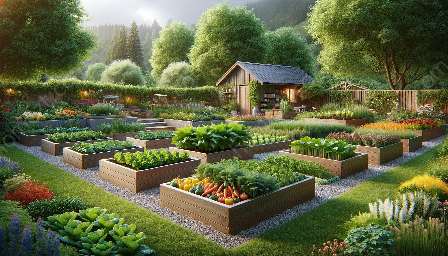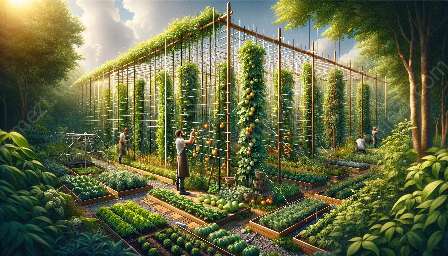Crop rotation is a time-tested practice that is essential for maintaining healthy soil and optimizing yield in vegetable gardens. By strategically alternating the types of crops grown in specific areas each season, gardeners can avoid depletion of nutrients, minimize pest and disease pressure, and enhance overall garden productivity.
Benefits of Crop Rotation:
1. Soil Health: Crop rotation helps prevent soil exhaustion by balancing nutrient uptake and improving soil structure. Different plant families have diverse nutrient needs, and rotating crops helps to replenish and maintain soil fertility.
2. Pest and Disease Management: Rotating crops disrupts the life cycles of pests and diseases, reducing their buildup in the soil and minimizing the risk of infestations and outbreaks.
3. Weed Control: Certain crops complement each other by inhibiting the growth of specific weeds. Rotating crops with varying root depths and canopy structures can help suppress weed growth without relying heavily on herbicides.
4. Enhanced Biodiversity: Crop rotation promotes a diverse ecosystem within the garden, which can lead to increased beneficial insect populations and improved pollination.
Implementing Crop Rotation:
Crop rotation plans can vary based on the size and layout of the garden, as well as regional climate and soil conditions. However, the following general guidelines provide a framework for successful crop rotation:
1. Group Crops by Family: Divide vegetable crops into distinct plant families, such as nightshades (tomatoes, peppers, eggplants), brassicas (cabbage, broccoli, kale), legumes (beans, peas), and cucurbits (cucumbers, zucchini, pumpkins).
2. Rotate in Sequence: Plan a multi-year crop rotation sequence, ideally spanning three to four years. Avoid planting the same family of crops in the same area for consecutive growing seasons.
3. Consider Cover Crops: Integrate cover crops, such as clover, rye, or vetch, into the rotation scheme. These cover crops help build organic matter, fix nitrogen, and prevent soil erosion during fallow periods.
4. Monitor and Adapt: Keep records of the crops grown in each area and observe the performance of the rotation system. Adjust the rotation plan based on observed outcomes and any emerging issues.
Crop Rotation in Gardening and Landscaping:
Beyond the direct benefits for vegetable gardens, the principles of crop rotation can be applied to broader gardening and landscaping contexts. For example:
1. Ornamental Gardens: Incorporating crop rotation techniques in flower beds and ornamental plantings can help maintain soil health and minimize the need for chemical inputs.
2. Perennial Landscapes: Rotating perennial plants and shrubs in landscape designs can contribute to balanced soil fertility and reduce the risk of persistent pests and diseases.
3. Organic Landscaping: Organic landscaping practices can leverage crop rotation strategies to create resilient and sustainable landscapes with reduced reliance on synthetic fertilizers and pesticides.
Conclusion:
Crop rotation is a fundamental tool for preserving soil fertility and fostering healthy, productive gardens. By embracing crop rotation in vegetable gardens and extending its principles to broader gardening and landscaping endeavors, gardeners can create resilient, sustainable, and vibrant landscapes while reaping the benefits of diverse and bountiful harvests.


























